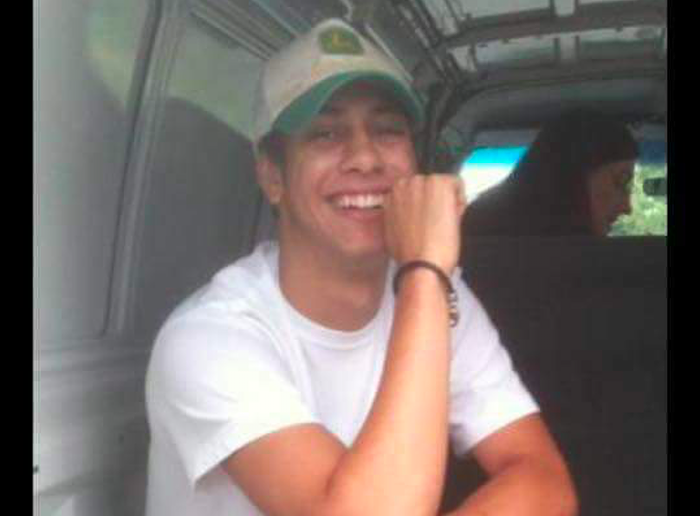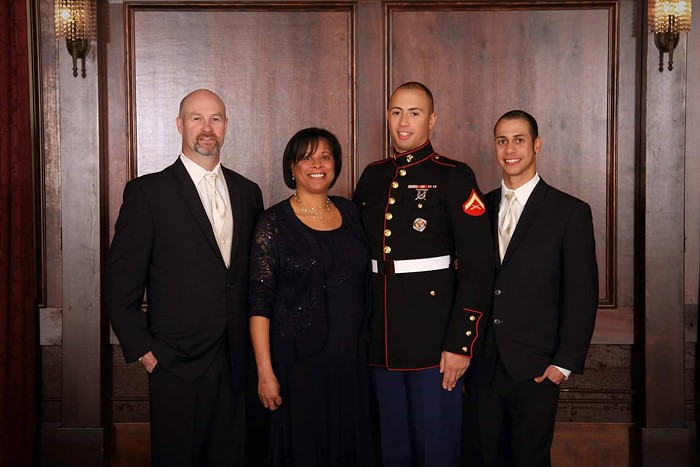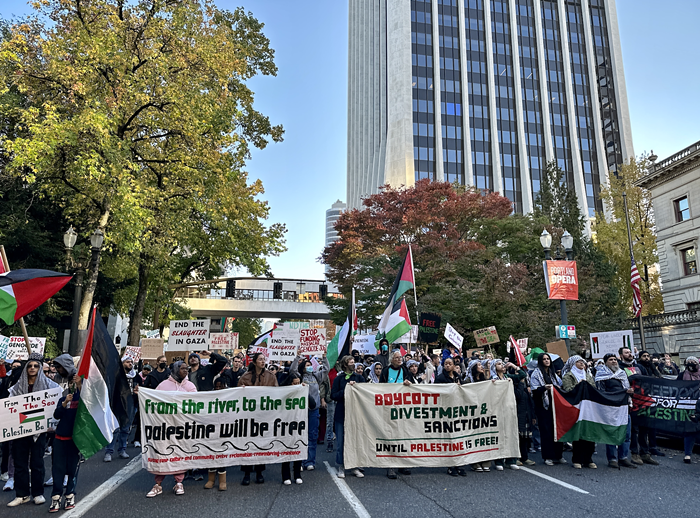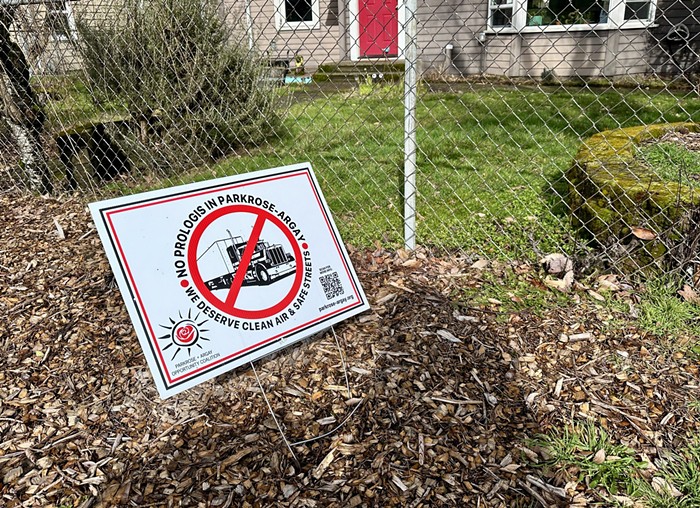
It’s been exactly two years since a pair of Portland police officers showed up at Alicia Johnson’s door to explain that her son had been fatally shot by another officer.
“After you’ve lost a loved one to police brutality, the police should not be coming to your door to tell you what happened,” Alicia told the Mercury on Thursday. “They insisted that they came inside, they insisted I wake up my husband. They came to my house with guns on their belts.”
Now, after months of reliving that day through old evidence and new analysis, Alicia’s prepared to seek justice for the death of her 24-year-old son, Terrell Johnson. And, in doing so, she’s hoping to dramatically change the way Portland holds its police force accountable.
On Friday morning, Alicia filed a federal lawsuit for the wrongful death of her son against the city, the officer who killed Terrell, and that officer’s superiors within the Portland Police Bureau (PPB). She’s also accused the defendants of violating Terrell’s civil rights—and her own.
The lawsuit alleges the city “has demonstrated that they exercise a pattern and practice of failing to train officers to follow police directives… and failing to properly investigate, monitor, and discipline officers for these violations.” Alicia, who is represented by Oregon Justice Resource Center (OJRC) attorney Juan Chavez, has requested a jury trial.
Terrell died the evening of May 10, 2017 after PPB Officer Samson Ajir fired three bullets into his torso.
The encounter began after a woman called 911 to report that Terrell, who she said appeared homeless and “crazy,” had chased her teenage neighbor off the SE Flavel MAX platform. Before the police arrived, the 17-year-old boy and his father returned to the platform wielding a kitchen knife and briefly confronted Terrell, then left.
A West Linn officer assigned to the multi-jurisdictional Transit Division police force was the first to arrive and spoke to Terrell, who later said the young man seemed “fidgety.” When asked, Terrell told the officer he had a knife in his pocket—but the officer didn’t ask to see it. The officer did, however, notify police who were en route to the scene that Terrell had a weapon.
When Terrell saw a second pair of officers, including PPB’s Ajir, arrive at the station, he ran.
“I used to trust the police. I really thought they were there to help. I didn’t realize that cops could shoot people and the system would back them up."
Ajir sprinted after Terrell down the MAX tracks, later telling investigators that he intended to chase him until he was tired and gave up. Ajir was able to run past Terrell and circled around to face him, and Terrell stopped running. At that point, Ajir who was only seven or eight feet behind him. Ajir told investigators he thought Terrell was going to surrender. Instead, Terrell allegedly began “slashing” at the officer with a box cutter knife.
Ajir unholstered his gun and tried to back up, but tripped over a curb and fell, firing four bullets at Terrell in the process. In later interviews, Ajir said he believed Terrell was going to kill him and confirmed that all of the gunshots were intentional.
Minutes later, Terrell was pronounced dead.
Alicia says that months leading up to his death, Terrell was struggling to find help with mental health and addiction issues. He was turned away from several residential clinics for lack of space. She believes his actions on May 10 directly reflect his untreated mental illness.
Ajir was later cleared of any criminal charges by a Multnomah County grand jury, on the basis of self defense. He faced no discipline, and continues to work at PPB.
PPB’s officer policies, called “directives,” address how and when officers should chase after a suspect on foot. One specific directive explains that if officers engage in a “foot pursuit,” the officer should notify emergency dispatchers via radio, coordinate with another officer to create a plan to contain the person they’re chasing, and follow that person at a “safe distance.”
The lawsuit says that officer testimony during the resulting grand jury trial, and PPB’s own interview with Ajir after the shooting, proves that Ajir followed none of these rules. He did, however, do one thing that the PPB directive prohibits: Engaging on foot when an officer knows the suspect is armed.
“Had Defendant Ajir followed directives concerning when and how to properly conduct, or not conduct, a foot chase, [Terrell] would be alive today,” reads the lawsuit.

It also accuses Ajir’s superiors of allowing Ajir’s misconduct to slide when reviewing his actions afterwards.
“While testifying at grand jury, PPB Sergeant Derrick Foxworth stated that Ajir’s use of force was ‘in policy,’” the lawsuit reads. “Later training and commander review documents also found the use of force justified. These PPB commanders and trainers ignored the clear violations of PPB directives.”
That argument was initially made by investigators with the OIR Group, an independent California-based firm contracted to review fatal PPB shootings for the City of Portland on an annual basis.
The OIR Group’s latest report, published in January, found that Ajir’s decision to follow Terrell so closely on foot led to his fatal decision. “The fact that the subject was able to turn and advance so quickly that Officer Ajir was immediately in fear for his life suggests there was not an effective buffer between the two,” the report reads.
OIR places the blame on PPB trainers for not properly training its officers on this directive and on not disciplining Ajir for his clear misconduct.
The report states that PPB’s internal investigations and analysis into Ajir’s actions “ignore or mischaracterize some facts in order to minimize those risks.” Investigators all but accuse a PPB commander and training expert of lying in their analysis of the incident.
In the lawsuit, those PPB superiors are simply dubbed as defendants “John Does 1-5.”
Shortly after Terrell’s death, Alicia sought legal representation to try to file a lawsuit against the city—but the lawyers she found couldn’t find enough evidence to make a case. When she read the latest OIR report, however, Alicia was determined to try again.
“It’s very apparent in the OIR report that anyone and everyone who dealt with Ajir—all of his supervisors—they knew of the directive,” says Alicia. “But they didn’t make any attempt to punish him accordingly or hold him accountable at all. That’s not right.”
“This is the end result of over-policing and over-surveillance in a punitive culture."
So she reached out to Chavez at the OJRC. Chavez says Terrell’s case is just one example of the Portland police using excessive, often fatal force against someone with a mental illness.
“There is clearly a pattern and practice in the PPB to absolve and condone this kind of behavior. It’s a cultural issue and it's a systemic issue,” he says. “[Terrell] was looking for help. In a way, this goes even beyond the PPB and the city—it goes on to how we fund mental health care and how we as a society treat people who undergo mental illness.”
Chavez points out how it’s been eight years since a US Department of Justice investigation found that Portland police officers consistently engage in a “pattern of... unnecessary or unreasonable force during interactions with people who have or are perceived to have mental illness.”
Since entering a settlement agreement with the DOJ with a promise to improve this dark trend, PPB officers have killed no fewer than 13 people undergoing a mental health crisis.
“This is a known issue, a well-documented one,” says Chavez. “This is the end result of over-policing and over-surveillance in a punitive culture.”
Alicia says she wants this lawsuit to bring justice to Terrell—and to influence how the city and PPB handle police misconduct cases going forward.
“I’m hoping this gets the city to realize that when you don’t hold police accountable for the directives they’re expected to follow, nobody else feels like they have to follow them,” she says. “If they know they can go rogue, do whatever, and have no punishment for it, then why would anybody else do what they were supposed to?”

“In any other job that you work in, you have rules to follow,” Alicia continues. “If you don’t follow them, you get fired. It’s only the police that get to break the the rules and keep their job, get pensions, be rewarded... get promoted.”
Last month, Ajir was promoted to sergeant at PPB.
The lawsuit names Alicia as one of the plaintiffs harmed by PPB’s misconduct, accusing Ajir and his supervisors of depriving her of “her son’s love, assurances, comfort, companionship, and relentless optimism.” This resulted in her emotional suffering, according to the lawsuit.
One example of that suffering? Alicia recalls how county prosecutors harshly depicted Terrell to the media and the public after his death. “Not only do you have to deal with the death of your child, you have to deal with them slandering them and dragging their name through the mud so that they can make their case,” she says. “It’s really painful.”
Alicia’s firsthand experience with the fallout of a deadly police shooting has also left her cynical about the motives of those in power, especially Mayor Ted Wheeler.
Months after Terrell’s death, Alicia reached out to Wheeler’s office to find a time to talk. Instead of meeting at his office, Wheeler came to her home.
Alicia said she asked why, days after Terrell’s death, Wheeler chose to visit the scene where he died, but not her house. According to Alicia, Wheeler explained that he didn’t visit because “he didn’t know if I’d be mad, and he didn’t want to deal with someone being irate.”
“I thought, ‘Wow, that’s pretty ballsy of you to not risk being yelled out in case I was upset that my child was killed,’” says Alicia.
But, to Alicia, her case is larger than just one elected official or one officer. It’s about the other families who might not have to go through what she’s faced.
If anything, she says, the case may serve as a reminder to the community that officers aren’t always what they seem.
“I used to trust the police. I really thought they were there to help,” Alicia says. “I didn’t realize that cops could shoot people and the system would back them up. That the things they did would be covered up, or not looked into. I didn’t know it could go through so many hands and still end up this way.”



















